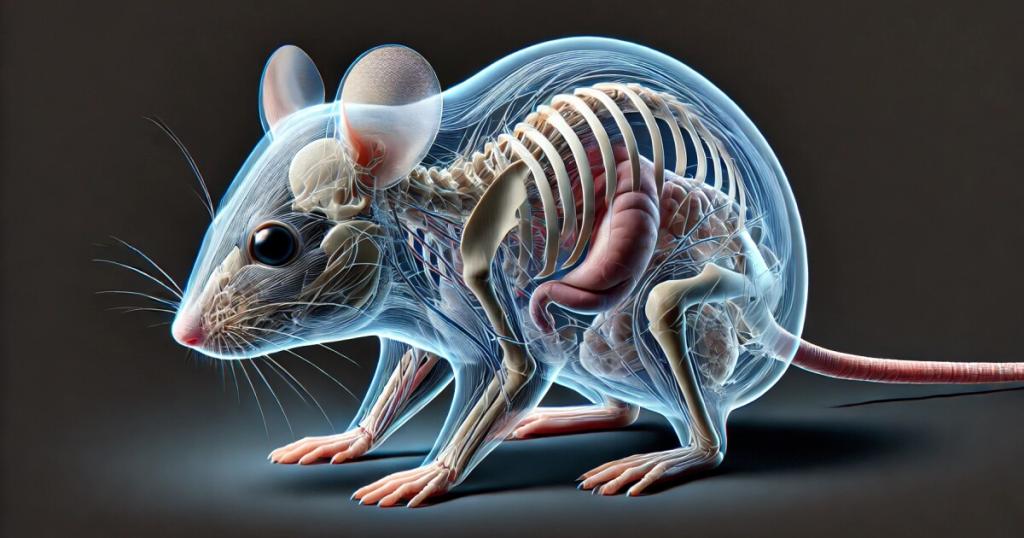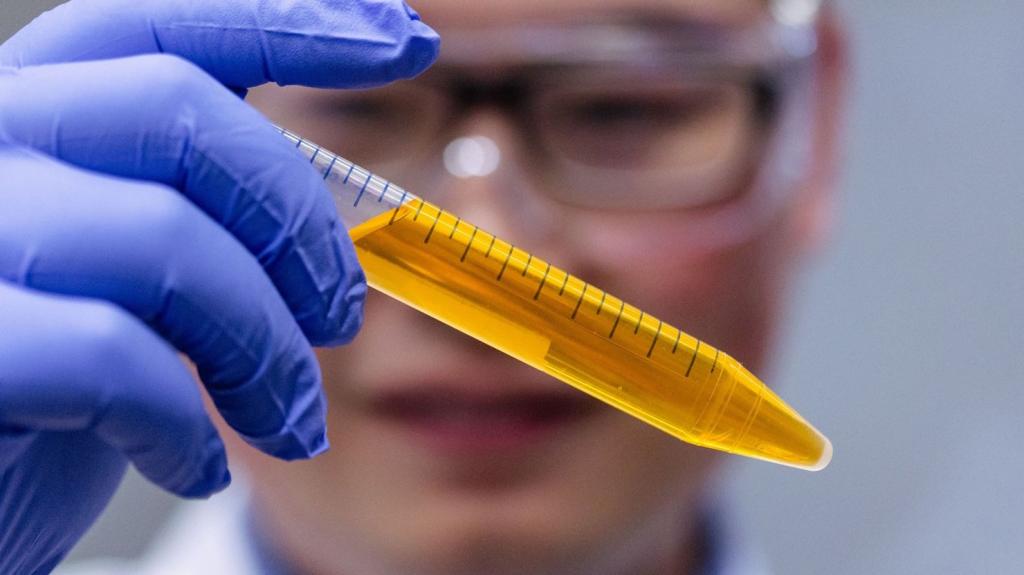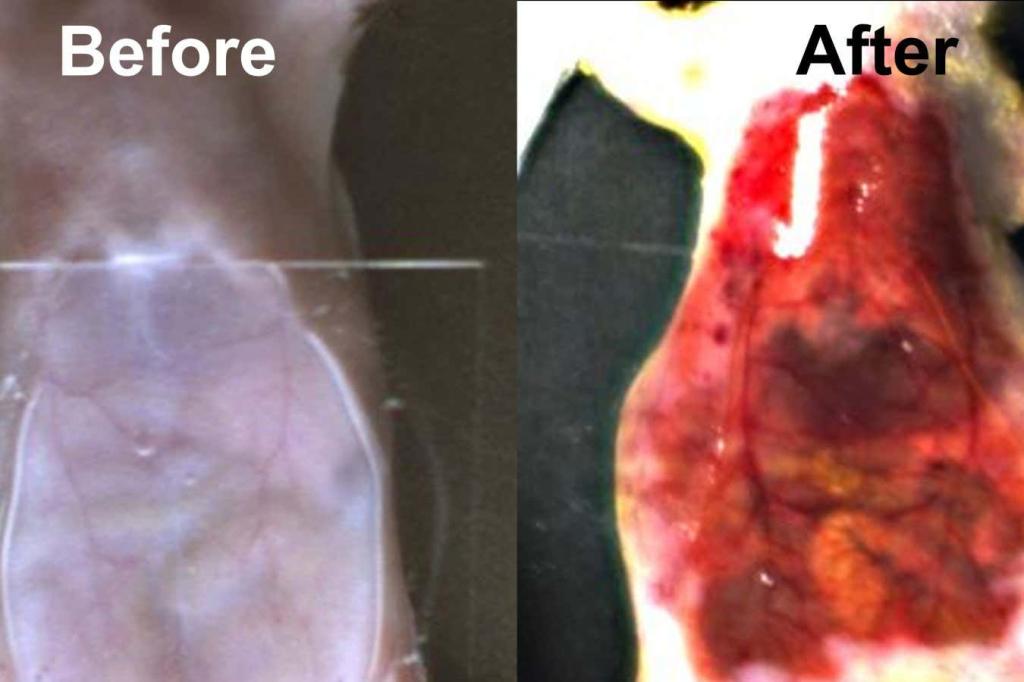Transforming Mouse Skin: The Power of Tartrazine Dye
Stanford researchers reveal how tartrazine dye can temporarily transform mouse skin into a transparent window, enhancing insights into internal organs and medical procedures.

Key Points
- Stanford researchers developed a method using tartrazine
dye to make the skin of live mice temporarily transparent, revealing internal structures.
- This non-invasive technique offers potential applications in medical diagnostics, such as improving blood extraction and early cancer detection.
- The reversible nature of the dye allows observation without long-term effects, paving the way for future clinical applications in humans.
Imagine being able to see inside a living organism without the need for invasive procedures or extensive imaging systems. Recent groundbreaking research has turned this possibility into reality. Scientists at
have developed a revolutionary method that utilizes a common food dye, tartrazine, to make the skin and tissues of living mice temporarily transparent. This innovative approach opens exciting new avenues for medical research and diagnostics.
The Science Behind Transparency
The primary challenge of viewing internal organs through live tissue lies in the scattering of light caused by the varying physical properties of biological materials. Light interacts differently with water, fats, and proteins, leading to a level of opaqueness that prevents clear observation. By applying tartrazine, a dye known for absorbing blue and ultraviolet light, researchers can manipulate the refractive indices of these various tissue components. This process reduces light scattering, allowing for a translucent effect that reveals underlying structures.

During the experiments, mice had the dye applied to their skin, which resulted in immediate transparency. Remarkably, the transparency is reversible; once the experiment is complete, the dye can be washed off, restoring the original state of the skin. The subsequent observations revealed blood vessels in the scalp, muscle fibers, and even internal organs like the liver and intestines, showcasing the profound potential of this technique.

Applications and Future Prospects
The implications of this research extend far beyond simple observation. The potential clinical applications are vast, ranging from improving blood draw techniques to enhancing the visibility of tumors for early detection and treatment of cancer. For instance, using this method, clinicians could easily locate veins for blood extraction, significantly reducing the discomfort associated with traditional techniques. Additionally, improved visibility of tumors could aid in more effective surgical interventions.
Despite the promising outcomes observed in mice, it's essential to note that human skin is approximately ten times thicker, raising questions about the feasibility of this technique for direct human applications. Current efforts are focused on determining safe dosages and effective methods for dye administration in humans.

In addition to tartrazine, researchers are exploring other substances and molecules that may enhance this method's efficacy. For now, the key takeaway lies in the significance of this research: it presents a non-invasive option for internal observation that could reshape various fields, including biology, medicine, and cosmetic applications.
Broader Impact in Medical Research
As science continues to explore new frontiers, this innovative dye technique could revolutionize the way we study and understand complex biological processes. For example, it might enable real-time monitoring of physiological functions without subjecting live subjects to the risks associated with surgical procedures or invasive imaging techniques. The benefits of such advancements could ultimately lead to reduced healthcare costs and improved patient outcomes.

Through their study, the Stanford team has not only uncovered a remarkable technique but has also paved the way for future research that harnesses the power of simple, safe materials for profound medical applications. This approach has the potential to minimize invasive procedures while enhancing our understanding of biological systems, a dream that many researchers have long aspired to achieve.
In summary, the use of tartrazine to create transparency in living tissues marks a significant leap forward in medical science. As researchers continue to explore its applications and implications, the possibilities for improving healthcare delivery and outcomes become increasingly encouraging. The transition from fiction to reality in visualizing the inner workings of living beings is on the horizon, and we can look forward to a future where such techniques become commonplace in clinical practice.

